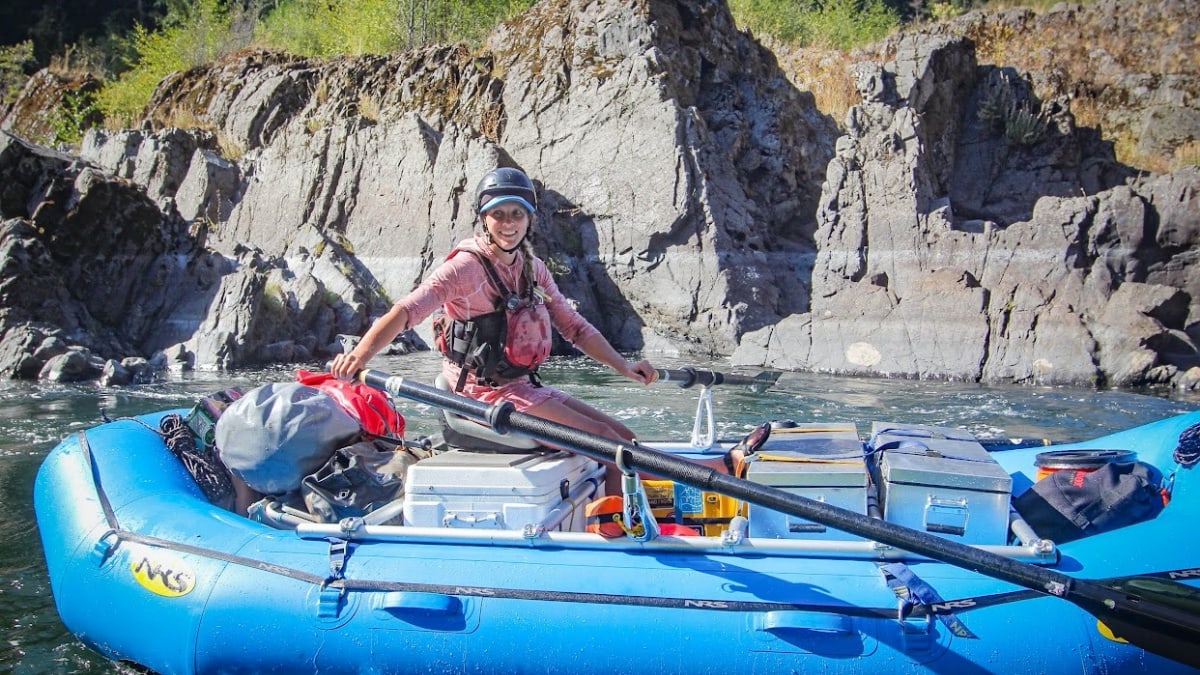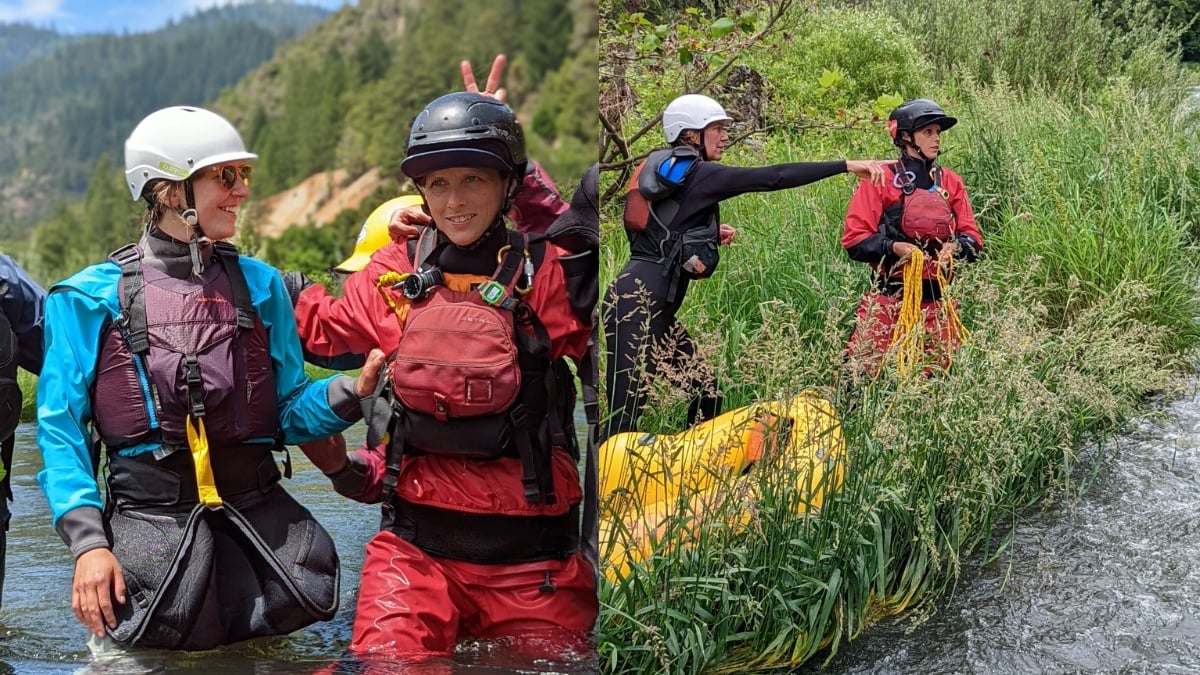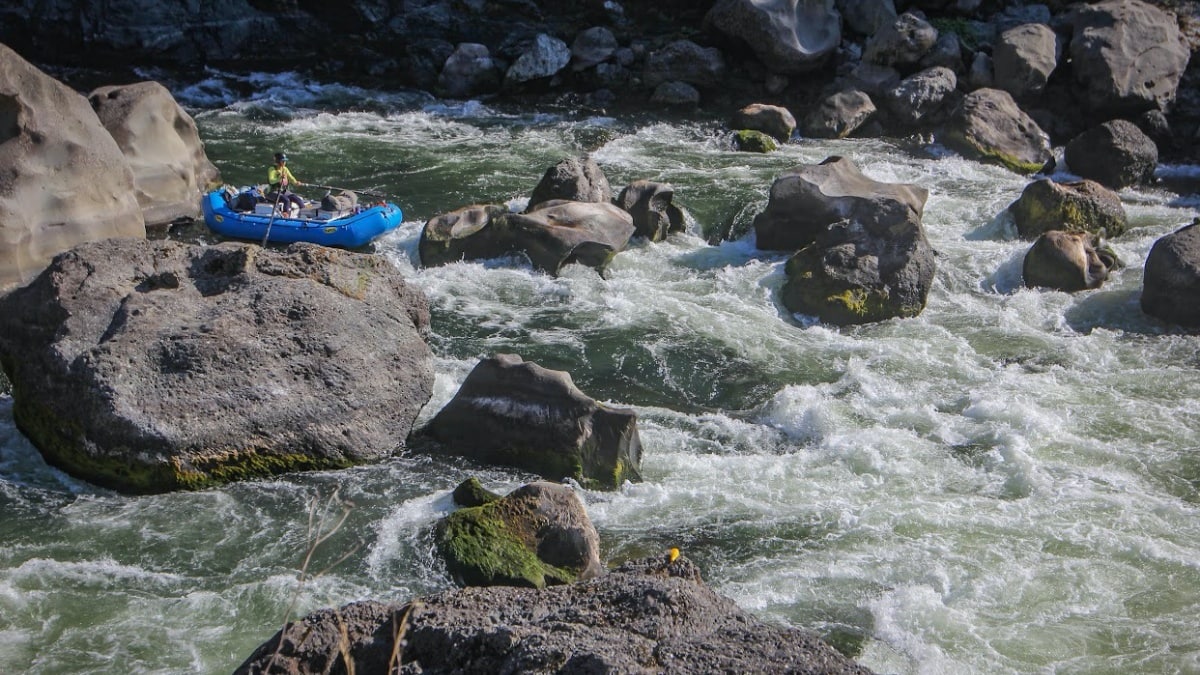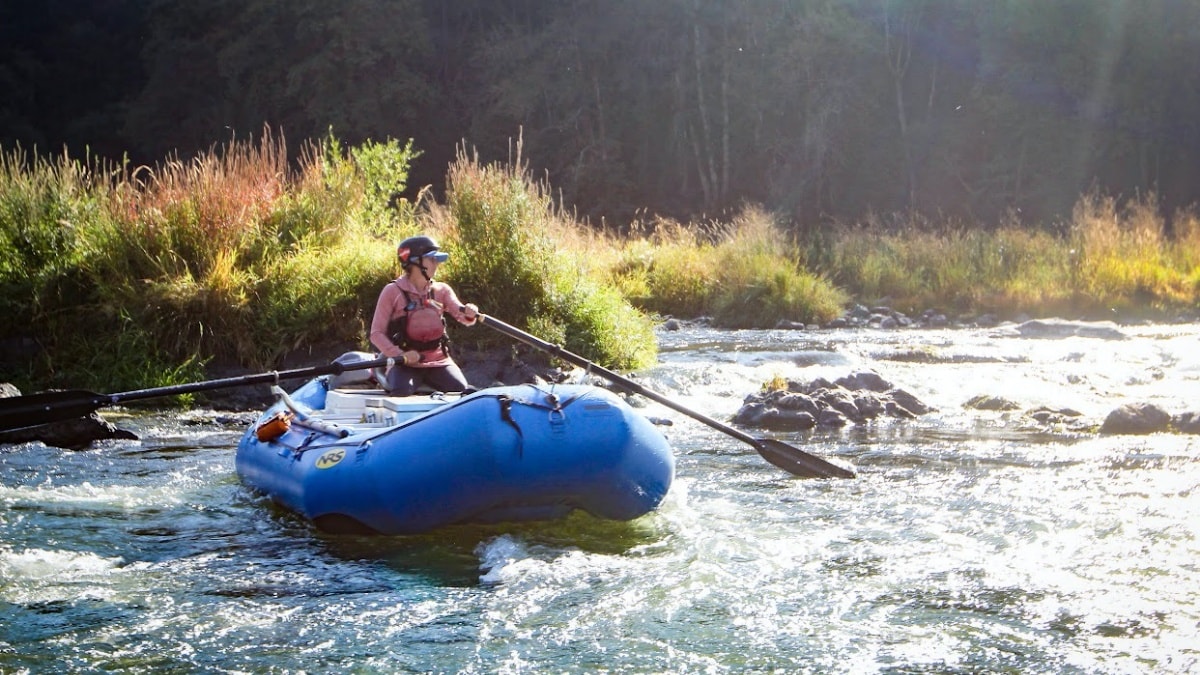Rookie of the Year: Magic Tricks for Your First Season Guiding
My first season officially guiding was a real sink or swim, thrown to the wolves kind of situation. Although I was lucky enough to work under my mentor and learn from the best, there’s only so much a senior trip leader sensei can teach a private boater student. At some point, the hand holding is over and baby birdies are pushed out of the nest for their own good.

K.M. enjoying a Rogue River trip | Photo by Sarah McMillen
Outside of having all the prerequisite credentials (a Wilderness First Responder Course, or, at least a Wilderness First Aid, a Swiftwater Rescue Certification, a Food Handlers License) and interpretive training, here is some functional advice (magic tricks) for a greenhorn guide…
Ride the Highs
Some of the best advice I received was to ride the highs and weather the lows, just like whitewater waves. When it’s good, don’t be afraid to ride that out as long as you can. And when it’s low, hunker down and grit your teeth.
Be Thirsty
Take on any task, show up early and ask for feedback and advice. Watch and pay attention. Sign up for any and all learning opportunities. Treat learning about boating like it’s water, and you're dehydrated in the desert. Drink it up. For best results, know your learning style and purposely put yourself in situations where you’ll have access to that type of education.

Be ready for everything | Photo by Sarah McMillen
Bounce Back
You're going to take some blows. You might even react badly in an array of situations. That’s OK. Keep showing up. You are not defined by one flip, one rapid, one river or one toxic manager. Be in it for the long haul and have a long term vision for yourself. Even though every boater and guide has ways they can improve, we all deserve a seat at the table and the grace and space to work on growth. There were so many moments I wished someone would say to me, “You still deserve to be here.” But I learned to say it to myself instead.
Flare - Slip into something a little more comfortable
It’s critical that you have lots of outfits at your disposal. Especially when group and team relations are strained. Costumes can be great conversation starters, an indirect way to spark unity and bonding as well as let people know it’s OK to be themselves. Because whitewater can be intimidating, costumes and flare can ease the tension. This is especially effective with youngsters. If you are willing to share elements of your costume with youth, they really get a kick out of that too. Fave pieces include: lens-less dramatic glasses, cowpoke hats, fake mustaches, biodegradable glitter and eco conscious colorful sunscreen/face paint.
Personal medicine kit and guide snacks
This kit should consist of your favorite remedies and creature comforts. Although you don’t have to share, think about bringing enough for an occasional ration for guests or other guides. Sharing is good for morale and could score you extra tips. My kit contains first and foremost an assortment of feminine hygiene products including over the counter monistat and bladder infection pills. You never know. I am prone to tummy aches so I also include oral charcoal supplements which can work miracles. Other musts are a thermometer, Tums or Rolaids, Gnarly electrolytes, gummy worms and Tecnu (for poison oak).

Blossom Bar can be a crux for new Rogue guides | Photo by Sarah McMillen
Soft flexes go a long way
A “soft flex” is an action that is quietly and humbly asserting capability and the willingness to be a team player. In guiding, I believe the ultimate soft flex is to sneak away and clean the groovers before anyone has a chance too. Other soft flexes include volunteering to carry extra gear or extra passengers on the raft you’re captaining. Self selecting to do dishes when you aren’t required to or, waking up before everyone else and starting the coffee. The early bird gets the [worm and] respect of their co-workers.

Relax and have fun | Photo by Sarah McMillen
Some of this list was inspired by The Guides Guide Augmented: Reflections on Guiding Professional River Trips - an excellent read for any aspiring guide. Otherwise, all data gathered by the author.




